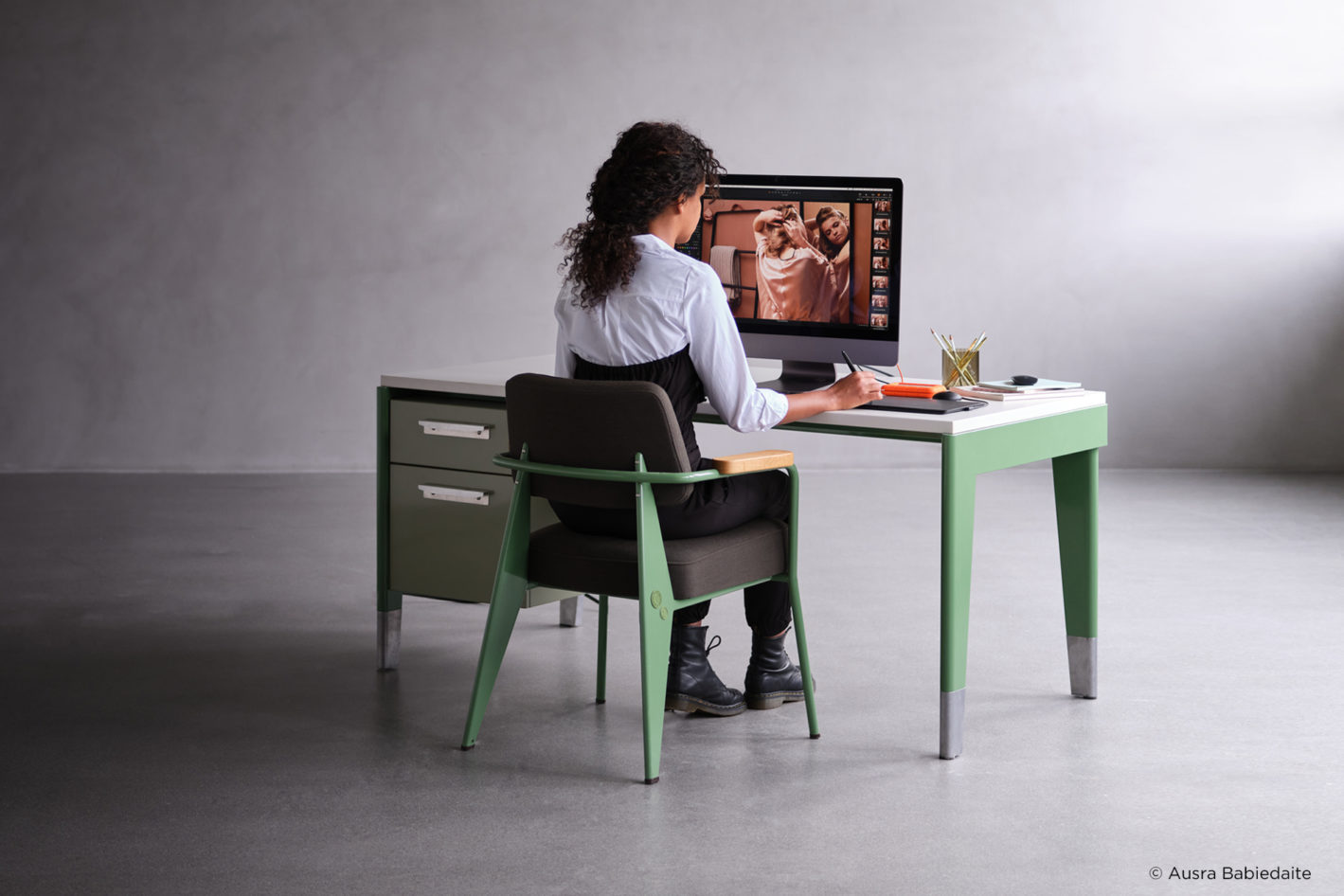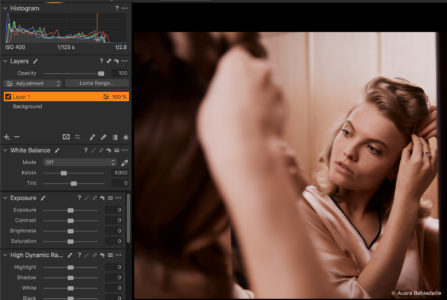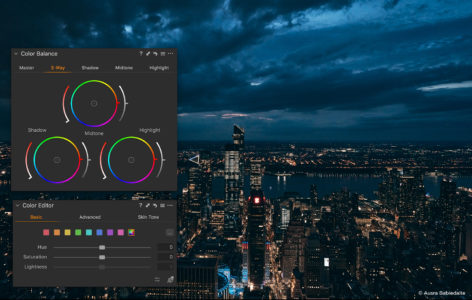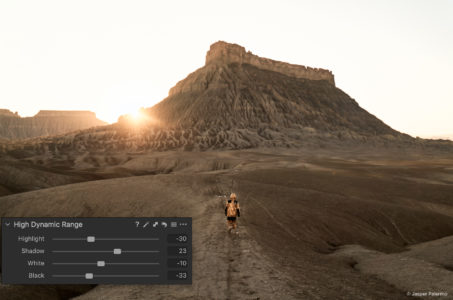NOTE: This article discusses an older version of Capture One Pro. To learn more about our latest version, click here.
Capture One 20 is here. Dive into the new tools, learn how to use them and discover how the most powerful photo editing system just got better.
Capture One 20 is here and we’re excited to share it with you!
When developing the next version of our powerful photo editing software, we set out to make photo editing as smooth as possible – while still giving you total creative control. That’s why we listened closely to feedback from our community and redesigned our tools to be more precise and easier to use than ever. Plus, we added a ton of small updates that will make a big difference to your workflow.
Ready for a new kind of editing experience? Dive into the latest tools and features below.
Workspace – Scrolling tools
We’ve taken the customizable workspace one step further in Capture One 20. Now, you can smoothly scroll through all your tools for a smoother editing experience.
Each Tool Tab now contains two sections: a pinned section and a scrollable section. Simply pin your favorites to the top of the tool tab and scroll through the rest of the tools below.
Basic Color Editor
The new Basic Color Editor has been redesigned to be more compact – and yet, more powerful. You now get eight color ranges instead of six – and flexible ways to adjust them.
You can edit colors with simple sliders or click anywhere on your image and drag to adjust any color. Using the new cursor tool, Direct Color Editor, you can drag across your images in different directions to change the sliders.
If you need to change the ranges, the spectrum is available from the (…) button. Any changes made to the spectrum will reflect in the color patches and the gradients on the sliders.
The new Basic Color Editor also works on Layers, making your layer editing simpler.
Improved Noise Reduction
Do you shoot high ISO? With the industry’s best performing noise reduction, you’ll now be able to preserve details and colors like never before when shooting in low light. That means you can start your editing with the cleanest possible images.
 High Dynamic Range
High Dynamic Range
Our High Dynamic Range tool is much loved for its ability to recover highlights and shadows – and now we’ve taken it one step further, so you get total control of your contrast.
With the redesigned High Dynamic Range Tool, the sliders now start in the middle, doubling the functionality of Highlight and Shadow Recovery to provide more contrast, not just recovery. Plus, a Black and White slider have been added, giving you control of the darkest shadows and brightest highlights.
By enabling fine-tuning of contrast in a fast and easy way, this redesigned tool is ideal for high-speed workflows and supplements the more advanced control you can achieve with Levels and Curves.
New Crop Tool
Cropping is now more precise and easier with the visible handles in the new Crop tool, making it easier to grab and resize the crop.
New modifier keys also allow you to crop around the center [ALT] and lock the current aspect ratio [Shift]. Plus, freehand rotation can be accessed by either moving the cursor outside the corner of the crop, of by using the modifier key [CMD/CTRL]. Hitting return while using the Crop Tool will now switch to the Pan Cursor Tool and show the image in its cropped state.
More possibilities with Layers
Capture One 20 allows even more flexibility when working with Layers, so you get more control of your final image.
You can now select specific layers to copy to other images – without replacing the existing layers on the destination photo.
You can also copy and apply layers between images with different dimensions, making it easier to streamline a workflow where multiple cameras are used or Styles are applied to Layers.
Improved DNG support
Capture One Pro 20 now renders the highest-quality DNG files from your camera, smartphone and drone thanks to improved color profiling for DNG format. That means you can edit with the best possible images, no matter the device.
“Select Next When”
Do you shoot high-volume projects like weddings or events? Culling and sorting large sets of photos is now faster than ever in Capture One 20. Enable “select next when” and let Capture One automatically switch to the next image when you star or color tag an image – it saves up to 50% of your keystrokes so you can get to editing faster.
This feature also works with Sets. Simply select multiple images and disable “Edit All Selected Variants.” When you star or color tag, the selection will move through the Set and switch to the next Set of the same size once the last image is rated.
Find the new feature within ‘Select > Select Next When’.
Small updates make a big difference
Check out these interface and user improvements below – they’ll make a big difference to your editing experience.
Improved Adjustment Clipboard
Enjoy a simpler clipboard when copying adjustments. Enable “auto-select adjusted” to collapse any groups without adjustments and get a clear overview of what elements will be included when pasting to other variants.
Toolbar text and icons
Find tools more easily thanks to default text under the icons. You can toggle this option on and off by right-clicking the toolbar.
Masking Cursor tools
The cursor tools for masking (brush, eraser, linear and radial gradient) can now be found in the Layers tool for easy access.
Viewer background color
Instantly change the background color of the viewer by right-clicking on the background. You can also make changes via the view-menu, with new shortcuts assigned –[Shift + 1, 2, 3… 6].
Browser thumbnails
See the big picture more clearly with a 50% increase in thumbnail resolution.
White Balance Picker
Get the best possible white balance consistency with the redesigned White Balance Picker tool.
Process button
Activate your selected Process Recipes more easily – the Process button has been moved to the Process Recipes tool.
Changes to default shortcuts
We’ve boosted our library of default shortcuts to give you even more possibilities for faster work:
Proof Margin: X
Direct Color Editor: D
Hide Viewer:G
Linear Gradient: L
Zoom to 100%: . (period)
Zoom to fit:, (comma)
Toggle Focus Mask: Q
Full Screen: F (On Windows F11 works as a secondary shortcut)
Viewer background color can be toggled using [Shift + 1, 2, 3… 6]
License keys for all variants
Make start-up simple. Now you get one license key for every variant of Capture One – whether Beta, Trial or Express.
Simply use the license key available from the BETA area of My Pages on captureone.com.
Want to try out the new features? Download a free 30-day trial of Capture One 20 and see all you can do with the latest photo editing tools.

Jakob Boie Sørensen
Jakob is a portrait and wedding photographer who also works as a Marketing Consultant with Capture One – his must-have tool for his professional work. Jakob is passionate about sharing his technical expertise and helping others discover the benefits of editing with Capture One.







You take pride in Capture One’s workspace customization but you took away the ability to set a keyboard shortcut for the Edit with menu option when it moved from the File menu in version 12. It’s one of those features that’s important to my workflow that I’d hoped would get fixed in version 20.
Great update. My list of things I want in a future updates.
1) Add the ability to luma range mask also selecting hue and saturation ranges, and based the mask on three this components together if you want. That way creating dynamic masks you can copy between images, like in color grading suites.
2) Add that you can enlarge the histogram tool like curves for example, if you need so. Also add waveform and vectorscope it would be very convenient.
Thanks.
Thanks for the update.
It would be great if you can combine Color range and Luma range masking in one interface and use it on a layer. Like HSL keyer in color grading suite. Firsy you create a dynamic mask based on one or 3 componets, then you make adjustments with tools you want on that mask. Consider this for future versions.